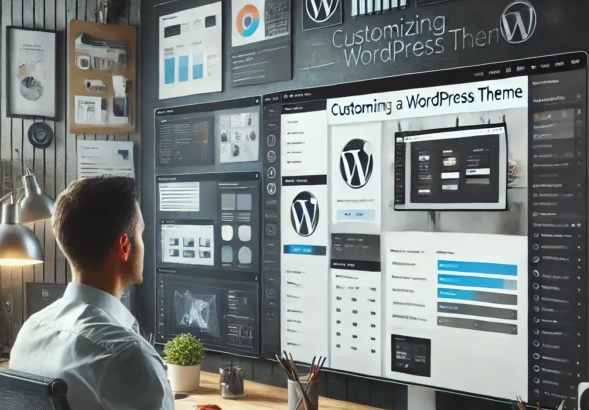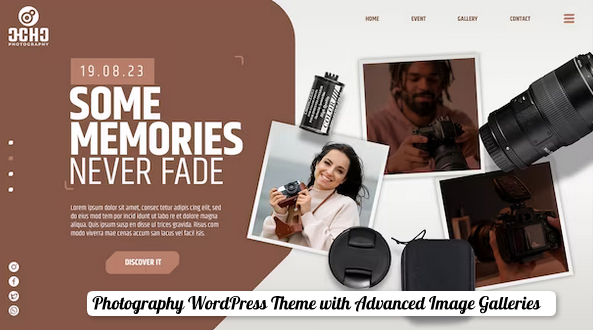Creating a powerful online presence is critical in today’s digital landscape, and branding plays a pivotal role in achieving that. For agencies, freelancers, and businesses, white label WordPress themes provide an exceptional foundation to craft unique and professional websites. By leveraging customization, these themes can be transformed into branding masterpieces that leave a lasting impression. Here’s how you can use white label WordPress themes to maximize branding impact.
Contents
- 1 Why Choose White Label WordPress Themes for Branding?
- 1.1 Step 1: Understanding Your Brand Identity
- 1.2 Step 2: Customizing Visual Elements
- 1.3 Step 3: Personalizing Layouts and Navigation
- 1.4 Step 4: Integrating Brand-Specific Features
- 1.5 Step 5: Optimizing for SEO and Performance
- 1.6 Step 6: Testing and Feedback
- 1.7 Step 7: Ongoing Updates and Maintenance
- 2 Case Study: Transforming a Template into a Brand Asset
- 3 To Sum Up
Why Choose White Label WordPress Themes for Branding?
White label WordPress themes are pre-built frameworks designed to be fully customizable. They allow businesses to rebrand the design without any third-party branding, ensuring a professional and unique appearance. The advantages include:
- Cost-effectiveness: Reduced development time and costs.
- Flexibility: Endless customization options to align with brand identity.
- Speed: Quick implementation without compromising on quality.
These benefits make white label WordPress themes a go-to choice for those seeking scalability and uniqueness.
Step 1: Understanding Your Brand Identity
Before diving into customization, it’s essential to have a clear understanding of your brand’s:
- Core values
- Target audience
- Visual identity (logos, colors, fonts)
- Tone and messaging
By identifying these elements, you ensure that every customization aligns with the brand’s essence.
Step 2: Customizing Visual Elements
Color schemes and fonts are vital in defining a brand’s personality. Choose colors that reflect your brand’s voice—whether it’s vibrant and energetic or minimal and professional. Similarly, select typography that enhances readability and aligns with your identity.
Logo Integration: Prominently display your logo in the header and footer. Ensure that it’s optimized for various screen sizes to maintain consistency across devices.
Imagery and Graphics: Replace default images with high-quality visuals that resonate with your audience. Invest in custom illustrations or stock images that complement your industry and messaging.
Learn: Selling Canva Templates On WordPress
Most white label themes come with multiple layout options. Choose layouts that prioritize user experience (UX) and ensure your content is easily accessible.
Simplify Navigation: Create an intuitive menu structure. Ensure that users can find key information quickly, whether they’re browsing on mobile or desktop.
Add Call-to-Actions (CTAs): Incorporate engaging CTAs like “Get Started” or “Learn More” to guide users through your website’s journey.
Step 4: Integrating Brand-Specific Features
Enhance functionality by adding brand-specific plugins. For example:
- Social media integrations for increased engagement.
- Contact forms tailored to your business needs.
- Review sections to showcase customer testimonials.
Animation and Interactive Elements: Use subtle animations to make your site more dynamic. Elements like hover effects, scrolling animations, and sliders can improve user engagement.
Localization and Multilingual Support: If you’re targeting a global audience, ensure your website is equipped with multilingual capabilities. Tools like WPML can help you localize your content effectively.
Read: How To Make WordPress Themes Writable
Step 5: Optimizing for SEO and Performance
Optimize meta tags, alt texts, and headers to improve search engine rankings. Use SEO plugins like Yoast or Rank Math for easy management.
Performance Tuning: A slow website can harm both user experience and rankings. Optimize images, enable caching, and use a content delivery network (CDN) to ensure fast loading times.
Mobile Responsiveness: Ensure your website is fully responsive. Test its appearance and functionality on various devices and screen sizes.
Step 6: Testing and Feedback
Before launching, test your website to ensure:
- All links and buttons work.
- Forms and integrations function properly.
- The site loads quickly and looks consistent across browsers.
Gather feedback from colleagues or beta testers to identify areas for improvement.
Know more: How to Add WordPress Tag Support to Your Theme
Step 7: Ongoing Updates and Maintenance
A website is never truly finished. Regularly update your content, refresh visuals, and add new features to keep your site aligned with your brand’s growth.
If you’re an agency, offering post-launch maintenance can:
- Keep the client’s site secure and updated.
- Strengthen client relationships.
- Create recurring revenue streams.
Case Study: Transforming a Template into a Brand Asset
A small retail business used a white label WordPress theme to create a website that captured its essence. Through color customization, strategic layout choices, and the integration of customer reviews, the site became a vital branding tool. The result? Increased online traffic and higher customer engagement within three months of launch.
To Sum Up
White label WordPress themes offer the perfect blend of flexibility and efficiency for businesses aiming to create a strong digital presence. With thoughtful customization, these themes can be transformed into unique branding tools that resonate with audiences and drive business success.
Are you ready to craft a website that reflects your brand’s magic? Contact us today, and let’s bring your vision to life!




